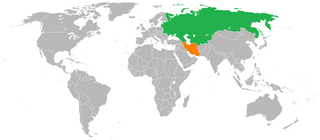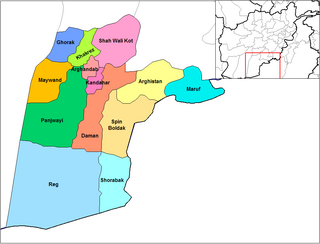Related Research Articles

The Qatar Armed Forces are the military forces of the State of Qatar. Since 2015, Qatar has implemented mandatory military conscription with an average of 2,000 graduates per year. As of 2010, Qatar's defence expenditures added up to a total of $1.913 billion, about 1.5% of the national GDP, according to the SIPRI. Qatar has recently signed defence pacts with the United States in 2002 & 2013, with the United Kingdom in 2020, and with France in 1994.
The Cardinal of the Kremlin is an espionage thriller novel, written by Tom Clancy and released on May 20, 1988. A direct sequel to The Hunt for Red October (1984), it features CIA analyst Jack Ryan as he extracts CARDINAL, the agency's highest placed agent in the Soviet government who is being pursued by the KGB, as well as the Soviet intelligence agency's director. The novel also features the Strategic Defense Initiative (SDI), a real-life missile-defense system developed by the United States during that time, and its Russian counterpart. The book debuted at number one on the New York Times bestseller list.

The FIM-92 Stinger is an American man-portable air-defense system (MANPADS) that operates as an infrared homing surface-to-air missile (SAM). It can be adapted to fire from a wide variety of ground vehicles, and from helicopters and drones as the Air-to-Air Stinger (ATAS). It entered service in 1981 and is used by the militaries of the United States and 29 other countries. It is principally manufactured by Raytheon Missiles & Defense and is produced under license by Airbus Defence and Space in Germany and by Roketsan in Turkey.

Arms trafficking or gunrunning is the illicit trade of contraband small arms, explosives, and ammunition, which constitutes part of a broad range of illegal activities often associated with transnational criminal organizations. The illegal trade of small arms, unlike other organized crime commodities, is more closely associated with exercising power in communities instead of achieving economic gain. Scholars estimate illegal arms transactions amount to over US$1 billion annually.

The Soviet–Afghan War was a protracted armed conflict fought in the Soviet-controlled Democratic Republic of Afghanistan (DRA) from 1979 to 1989. The war was a major conflict of the Cold War as it saw extensive fighting between the DRA, the Soviet Union and allied paramilitary groups against the Afghan mujahideen and their allied foreign fighters. While the mujahideen were backed by various countries and organizations, the majority of their support came from Pakistan, the United States, the United Kingdom, China, Iran, and the Arab states of the Persian Gulf. The involvement of the foreign powers made the war a proxy war between the United States and the Soviet Union. Combat took place throughout the 1980s, mostly in the Afghan countryside. The war resulted in the deaths of approximately 3,000,000 Afghans, while millions more fled from the country as refugees; most externally displaced Afghans sought refuge in Pakistan and in Iran. Approximately 6.5% to 11.5% of Afghanistan's erstwhile population of 13.5 million people is estimated to have been killed over the course of the conflict. The Soviet–Afghan War caused grave destruction throughout Afghanistan and has also been cited by scholars as a significant factor that contributed to the dissolution of the Soviet Union, formally ending the Cold War.

The Avenger Air Defense System, designated AN/TWQ-1 under the Joint Electronics Type Designation System, is an American self-propelled surface-to-air missile system which provides mobile, short-range air defense protection for ground units against cruise missiles, unmanned aerial vehicles, low-flying fixed-wing aircraft, and helicopters.

Man-portable air-defense systems are portable surface-to-air missiles. They are guided weapons and are a threat to low-flying aircraft, especially helicopters.

The 9K38 Igla is a Russian/Soviet man-portable infrared homing surface-to-air missile (SAM) system. A simplified, earlier version is known as the 9K310 Igla-1, and the latest variant is the 9K338 Igla-S.

Viktor Anatolyevich Bout is a Tajik-born Russian arms dealer and politician. A weapons manufacturer and former Soviet military translator, he used his multiple companies to smuggle arms from Eastern Europe to Africa and the Middle East during the 1990s and early 2000s. Bout gained the nicknames the "Merchant of Death" and "Sanctions Buster" after British minister Peter Hain read a report to the United Nations in 2003 on Bout's wide-reaching operations, extensive clientele, and willingness to bypass embargoes.

Charlie Wilson's War is a 2007 American biographical comedy-drama film based on the story of U.S. Congressman Charlie Wilson and CIA operative Gust Avrakotos, whose efforts led to Operation Cyclone, a program to organize and support the Afghan mujahideen during the Soviet–Afghan War (1979–1989).

Shortly after the September 11 attacks, the United States declared the war on terror and subsequently led a multinational invasion of Taliban-ruled Afghanistan. The stated goal was to dismantle al-Qaeda, which had executed the attacks under the leadership of Osama bin Laden, and to deny Islamist militants a safe base of operations in Afghanistan by toppling the Taliban government. The United Kingdom was a key ally of the United States, offering support for military action from the start of the invasion preparations. The American military presence in Afghanistan greatly bolstered the Northern Alliance, which had been locked in a losing fight with the Taliban during the Afghan Civil War. Prior to the beginning of the United States' war effort, the Taliban had seized around 85% of Afghanistan's territory as well as the capital city of Kabul, effectively confining the Northern Alliance to Badakhshan Province and smaller surrounding areas. The American-led invasion on October 7, 2001, marked the first phase of what would become the 20-year-long War in Afghanistan.

Operation Cyclone was the code name for the United States Central Intelligence Agency (CIA) program to arm and finance the Afghan mujahideen in Afghanistan from 1979 to 1992, prior to and during the military intervention by the USSR in support of the Democratic Republic of Afghanistan. The mujahideen were also supported by Britain's MI6, who conducted their own separate covert actions. The program leaned heavily towards supporting militant Islamic groups, including groups with jihadist ties, that were favored by the regime of Muhammad Zia-ul-Haq in neighboring Pakistan, rather than other, less ideological Afghan resistance groups that had also been fighting the Soviet-oriented Democratic Republic of Afghanistan administration since before the Soviet intervention.
This article deals with activities of the U.S. Central Intelligence Agency, specifically dealing with arms control, weapons of mass destruction (WMD) and weapons proliferation. It attempts to look at the process of tasking and analyzing, rather than the problem itself, other than whether the CIA's efforts match its legal mandate or assists in treaty compliance. In some cases, the details of a country's programs are introduced because they present a problem in analysis. For example, if Country X's policymakers truly believe in certain history that may not actually be factual, an analyst trying to understand Country X's policymakers needs to be able to understand their approach to an issue.

The policy of the Soviet Union towards the Iran–Iraq War from 1980 to 1988 varied, beginning with a stance of "strict neutrality" and moving towards massive military support for Iraq in the final phase of the war. The war was inconvenient for the USSR, which had aimed to ally itself with both Iran and Iraq. In the first period of the war, the Soviets declared a policy of "strict neutrality" towards the two countries, at the same time urging a negotiated peace. Iraq had been an ally for decades and the Soviets had tried to win over Iran as well, but their offers of friendship were rebuffed by both the pro-Western Shah and the Ayatollah of Iran. After the Iranian revolution, the Islamic Republic established its slogan as "neither East nor West." In 1982, the war turned in Iran's favor and the Iranian leader Ayatollah Khomeini pledged not to stop the conflict until he had overthrown the Iraqi president Saddam Hussein. Such a prospect was unacceptable to the Soviet Union, which now resumed arms sales to Iraq while still maintaining an official policy of neutrality. The Soviets also feared losing Saddam's friendship with the West. After further Iranian gains in 1986, the Soviet Union massively increased its military aid to Iraq. The Soviets were now afraid of the Iranians encouraging Islamic revolution in Central Asia. Soviet aid allowed the Iraqis to mount a counteroffensive which brought the war to an end in August 1988.

The Afghanistan conflict began in 1978 and has coincided with several notable operations by the United States (U.S.) Central Intelligence Agency (CIA). The first operation, code-named Operation Cyclone, began in mid-1979, during the Presidency of Jimmy Carter. It financed and eventually supplied weapons to the anti-communist mujahideen guerrillas in Afghanistan following an April 1978 coup by the People's Democratic Party of Afghanistan (PDPA) and throughout the nearly ten-year military occupation of Afghanistan by the Soviet Union (U.S.S.R.). Carter's successor, Ronald Reagan, supported an expansion of the Reagan Doctrine, which aided the mujahideen along with several other anti-Soviet resistance movements around the world.

The Battle of Arghandab was an offensive launched by Afghan government forces, supported by Soviet troops, against mujahideen strongholds in the Arghandab District of Kandahar Province, Afghanistan, in 1987. The operation ended in failure, and the government forces withdrew after suffering heavy losses.

Charlie Wilson's War: The Extraordinary Story of the Largest Covert Operation in History is a 2003 book by George Crile III. Upon publication, the book received praise from The New York Times, making it onto their best seller list. The book was also placed on Washington Post and Los Angeles Times best seller lists.

The defense industry of Ukraine is a strategically important sector and a large employer in Ukraine. After working for several decades mostly for the arms export markets, in 2014 it has moved significantly into increased Ukrainian military procurement since the start of the war in Donbas.
During the Soviet–Afghan War, there was a large amount of foreign involvement. The Afghan mujahidin were backed primarily by Pakistan, the United States, Saudi Arabia, and the United Kingdom making it a Cold War proxy war. Pakistani forces trained the mujahidin rebels while the U.S. and Saudi Arabia offered the greatest financial support. However, private donors and religious charities throughout the Muslim world—particularly in the Persian Gulf—raised considerably more funds for the Afghan rebels than any foreign government; Jason Burke recounts that "as little as 25 per cent of the money for the Afghan jihad was actually supplied directly by states." Saudi Arabia was heavily involved in the war effort and matched the United States' contributions dollar-for-dollar in public funds. Saudi Arabia also gathered an enormous amount of money for the Afghan mujahidin in private donations that amounted to about $20 million per month at their peak. Other countries that supported the Mujahideen were Egypt, China, West Germany, France, Turkey, Japan and even Israel, Iran on the other hand only supported the Shia Mujahideen, namely the Persian speaking Shiite Hazaras in a limited way. One of these groups was the Tehran Eight, a political union of Afghan Shi'a. They were supplied predominately by the Islamic Revolutionary Guard Corps, but Iran's support for the Hazaras nevertheless frustrated efforts for a united Mujahidin front.

Though not officially a belligerent during the Soviet–Afghan War, the United Kingdom was heavily involved, playing a key covert role in the conflict. Also known as the Second Great Game, the British provided both indirect and direct support for the Afghan mujahideen in their fight against the Soviet Union, including secretly arming, funding and supplying various factions. Britain's Secret Intelligence Service (MI6) primarily supported the Mujahideen group Jamiat-e Islami, commanded by Ahmad Shah Massoud who, having received little support from the US and Pakistan, became Britain's key ally in the conflict. Fighting in the Panjshir valley, Massoud and his fighters with British support and intelligence, overcame nine Soviet offensives and held out up to the Soviet withdrawal from the vital valley in 1986. Massoud became the most successful and feared out of any of the Mujahideen commanders.
References
- ↑ Coll, S. "Ghost Wars", 2005. p. 11
- 1 2 3 Stockholm International Peace Research Institute, "SIPRI Yearbook 2007", p. 636
- 1 2 Cooley, John K. "Unholy Wars: Afghanistan, American and International Terrorism", p. 145
- ↑ Chicago Tribune, "CIA Stung in Afghan Missile Deal", December 6, 1992
- ↑ Los Angeles Times, US bidding to regain missiles sent to Afghans, July 23, 1993
- ↑ Caldwell, Leslie. Defense Sentencing Memo. 19 October 2009. https://www.documentcloud.org/documents/6328605-Felix-Sater-Leslie-Caldewell-Defense-Sentencing.html. Accessed 27 August 2019.
